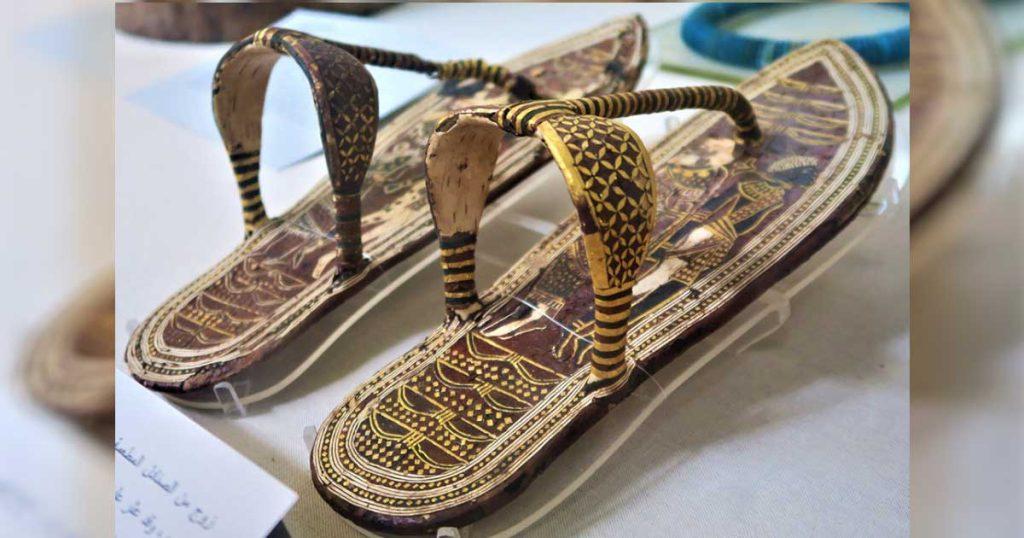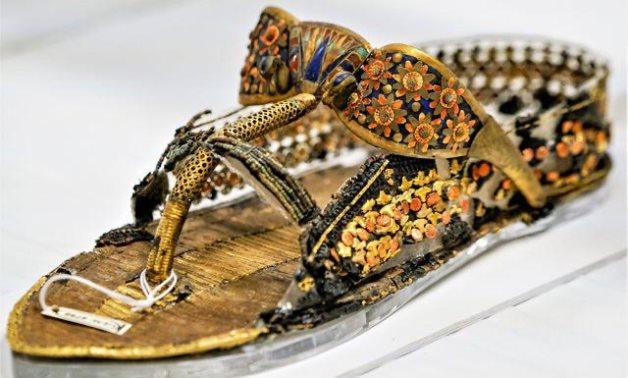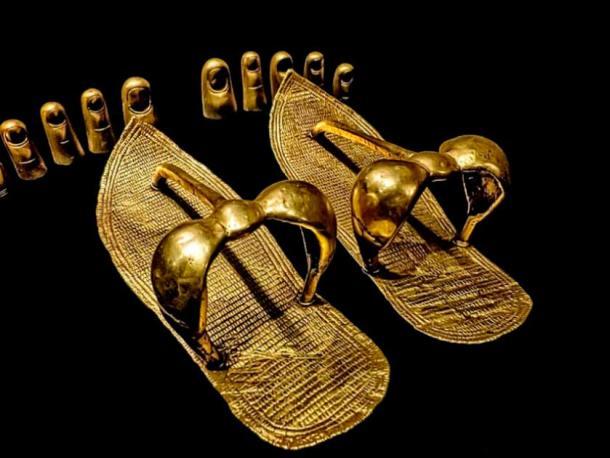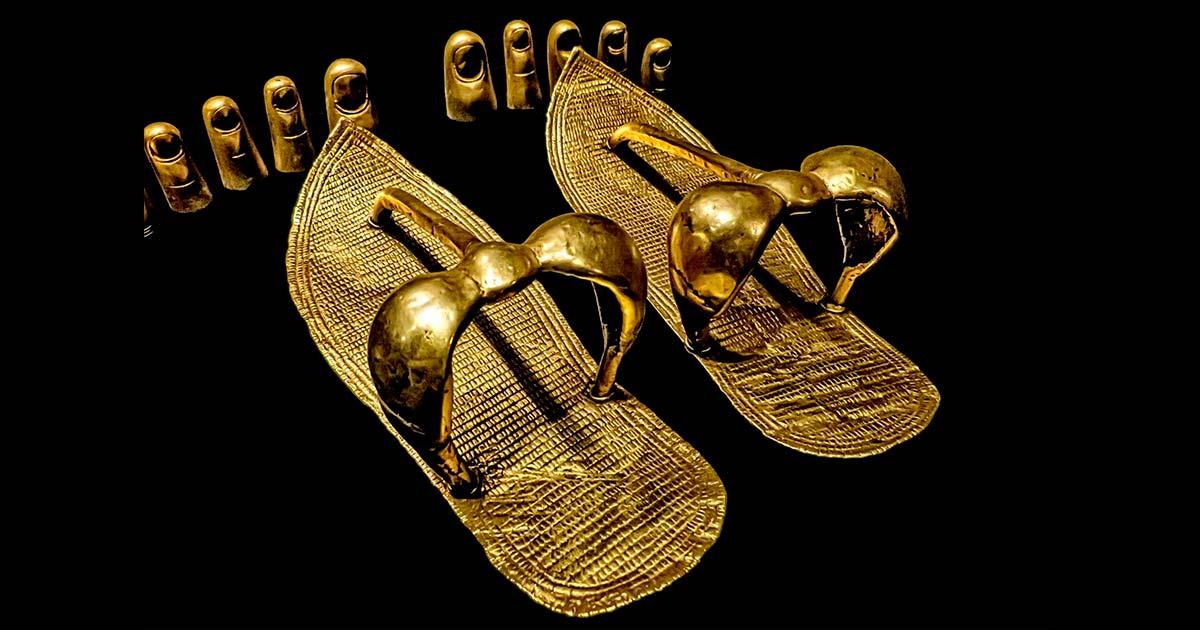Few know that the young King Tut also enjoyed a vast collection of footwear. The stunning find of Tutankhamun’s tomb KV62 by Howard Carter, one of the most exciting discoveries ever made by Egyptologists, captured headlines around the world back in the 1920s. While his golden death mask has become an iconic symbol of ancient Egypt, it was only in 2007 that experts undertook an in-depth study into the king’s footwear.

While the exact number of sandals is unclear, at least 80 samples were discovered in the virtually intact tomb of King Tut, included in the order to accompany him into the afterlife. While some were discovered in surprisingly good condition, all that was left of others were small fragments of foot straps. The best-preserved were the gold sandals discovered on the feet of King Tut’s mummy.

André Veldmeijer, a Dutch archaeologist and author of Tutankhamun’s Footwear: Studies of Ancient Egyptian Footwear, undertook the study of 81 samples housed at Luxor Museum and the Egyptian Museum in Cairo. These were all that remained of a wide variety of footwear embedded with gold, birch bark, vegetable fibers, gemstones, leather, and gold.

DNA tests and analysis of CT scans of his remains have revealed that King Tutankhamun probably suffered from birth defects caused by inbreeding, including a club foot and necrosis of the bone. Amongst the shoe collection discovered in his tomb, three pairs of shoes were particularly noteworthy. While experts are unsure if these sandals were actually worn or were merely symbolic, the inner soles of a pair of elaborate sandals depict an African prisoner on one foot and an Asiatic prisoner on the other, representing the enemies of King Tut’s kingdom. Taking into account that artistic representations were used to manifest royalty in ancient Egypt, the message was quite clear. Every time the pharaoh took a step, he would have literally been stepping on the faces of his enemies. “These features are not known in any other footwear, sandals or shoes alike,” said Veldeijer in an interview with Discovery News.

What’s even more surprising is the depiction of bound enemies on more than one pair of sandals found within King Tut’s tomb. While experts are unsure if these sandals were actually worn or were symbolic, the inner soles of a pair of elaborate sandals feature scenes portraying African and Asiatic prisoners, representing the enemies of King Tut’s kingdom. Considering that artistic representations were employed to showcase the triumphs of ancient Egypt, the symbolism is evident. The soles of these sandals depict an African prisoner on one foot and an Asiatic prisoner on the other, reinforcing the pharaoh’s dominance over his enemies. Each step he took would have symbolically trampled on the faces of those who posed a threat to his reign. Taking into account that artistic representations were used to manifest royalty in ancient Egypt, the message was quite clear. Every time the pharaoh took a step, he would have literally been stepping on the faces of his enemies.
